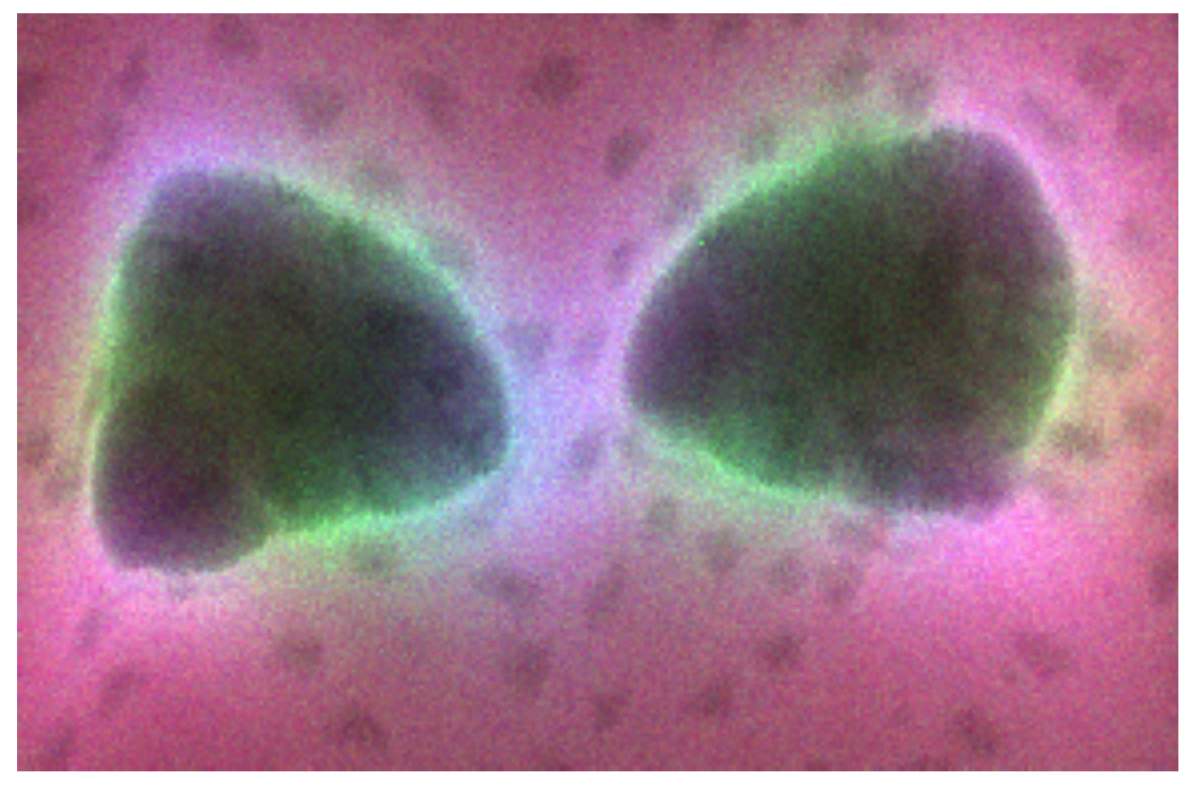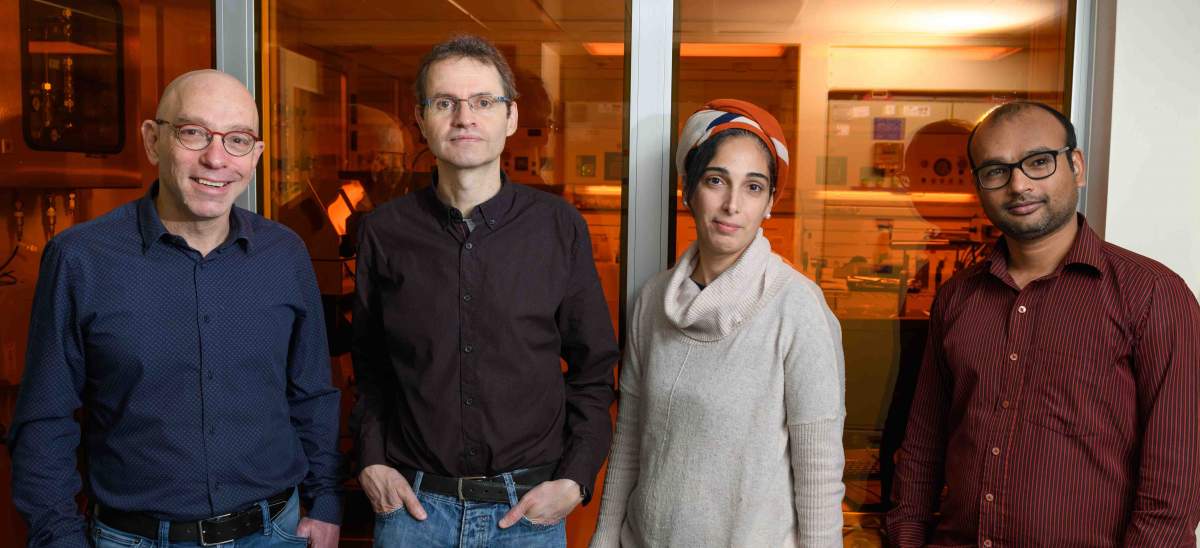Are you a journalist? Please sign up here for our press releases
Subscribe to our monthly newsletter:

The difference between light and matter ‒ it should be a clear and simple division. But there are situations in which the two become so closely connected that the situation becomes blurred. This can occur, for example, in metallic nanostructures that are tuned to absorb certain wavelengths of visible light. Prof. Gilad Haran of the Weizmann Institute’s Chemical and Biological Physics Department built, together with his research group, a structure especially for this purpose made of two triangle-shaped “antennas” facing one another, forming a “bowtie.” The bowtie functions to absorb light and concentrate it at a center point between the triangles, creating a strong electric field.
Right where the knot would be in the bowtie, the scientists placed a tiny bit of crystalline matter that swallows light. Such crystals also reemit light, and this swallowing and reemitting produces a strong attachment to the matter, creating new entities – particles of light (photons) and matter together – that have been dubbed “polaritons.” In their experiment, the group used one of the two Titan electron microscopes recently installed at the Institute to ask a new question: What happens with polaritons that are “dark”?

Such polaritons are made from plasmons, electron waves in the bowtie that cannot be excited by light that comes from the “far field.” However, an electron beam that interacts with the structure locally, at the “near field,” can excite them readily.
Thus, with the very narrow, precisely-aimed electron beam of this especially strong microscope, the scientists in Haran’s group were able, for the first time, to closely scan the tiny antennas, measuring the electron scattering at every point and to understand how the light-swallowing in the tiny crystal affected the centers of the antennas. This gave the researchers a highly accurate map – at a very high spectral resolution – that revealed the strong attachment created between light and matter.
The research, which was reported in Nature Communications, has a number of implications for further research, for example, in developing quantum applications, fine control of chemical processes and in designing new materials.
Prof. Gilad Haran's research is supported by the Henry Chanoch Krenter Institute for Biomedical Imaging and Genomics; and the Harold Perlman Family. Prof. Haran is the incumbent of the Hilda Pomeraniec Memorial Professorial Chair.